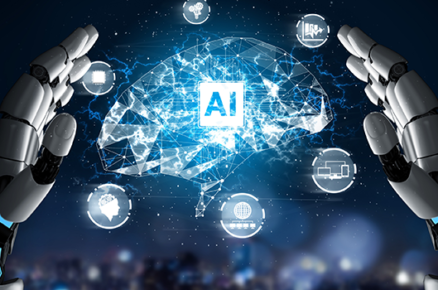Responsible AI is a governance framework that explains how a specific business handles the ethical and legal concerns associated with artificial intelligence (AI). Resolving uncertainty about who is liable if something goes wrong is a key motivation for responsible AI efforts.
It is up to the data scientists and software engineers who create and implement a given organization’s AI algorithmic models to set fair, trustworthy AI standards. This implies that the procedures necessary to avoid prejudice and encourage transparency differ from one company to the next.
Proponents of responsible AI believe that a widely established governance framework of AI best practices will make it simpler for enterprises all around the world to guarantee that their AI programming is human-centered, interpretable, and explainable.
The chief analytics officer (CAO) of a big corporation is often involved with establishing, implementing, and monitoring the organization’s Responsible AI framework. The framework, which is often detailed on the organization’s website, describes in simple terms how the organisation tackles responsibility and guarantees that AI is used in an anti-discriminatory manner.
What are the principles of responsible AI?
- AI and the machine learning models that power it must be comprehensive, explicable, ethical, and efficient.
- To prevent machine learning from being easily hijacked, A comprehensive AI includes well-defined testing and governance standards.
- Explicable AI is developed to express its goal, rationale, and decision-making process in a way that the ordinary end-user can easily understand.
- Ethical AI efforts employ procedures to identify and eradicate bias in machine learning models.
- Efficient AI can operate indefinitely and adapt swiftly to changes in the operating environment.
Why responsible AI is important
One essential objective of responsible AI is to limit the possibility that a minor change in the weight of input would significantly alter the output of a machine learning model.
Responsible AI factors:
- Each stage of the model creation process should be recorded in a way that cannot be manipulated by humans or other programmes
- Data used to train machine models should be free of bias.
- The analytic models that enable an AI project may be modified to change contexts without bias.
- The organization employing AI programming is aware of the potential consequences, both good and bad.
How do you design responsible AI?
Building a competent AI governance structure can be time-consuming. Continuous inspection is required to guarantee that a business is dedicated to developing unbiased, trustworthy AI. This is why a company must have a maturity model or criteria to follow when creating and deploying an AI system.
To be considered responsible, AI must be built with resources and technology by a company-wide development standard that requires:
- Shared code repositories
- Shared code repositories
- Approved model architectures
- Sanctioned variables
- Established bias testing methodologies to help determine the validity of tests for AI systems.
- Stability standards for active machine learning models to ensure AI programming works as intended
Implementation and how it works
It might be difficult to establish whether an algorithmic model is functioning effectively in terms of accountability. Organizations now have several options for implementing responsible AI and demonstrating that they have eliminated black box AI models. Among the current strategies are the following:
- Ensuring that data can be explained in a way that any person can understand.
- Ensuring that the design and decision-making processes are well documented so that if a mistake arises, it can be reverse-engineered to discover what went wrong.
- Creating a diverse work environment and encouraging productive dialogues to help reduce prejudice.
- Using interpretable latent characteristics to help build data that is intelligible by humans.
- Establish a rigorous development approach that prioritizes visibility into the latent aspects of each application.
Best practices for responsible AI
Governance practices must be rigorous and reproducible for building responsible AI. Among the best practises methodologies are:
- Implementing machine learning best practices.
- Developing a diverse and supportive culture. This involves forming gender and racially diverse teams to develop acceptable AI standards. Any review committee should be cross-functional throughout the organization. Letting teams openly discuss ethical ideas relating to AI and bias.
- Make every attempt to be transparent so that any decisions made by AI can be explained.
- Accountability plan. Early in the development process, assess for responsibility.
- Make your job as quantifiable as possible. Dealing with responsibility may be subjective at times, therefore having quantifiable methods in place, such as visibility, explosibility or having an ethical framework is critical.
- To analyze AI models, use responsible AI tools. In addition, do tests like bias testing and predictive maintenance.
- Maintain mindfulness and learn from the process. As time passes, an organization will learn more about responsible AI deployment, from fairness practices to technical references and information about technical ethics.












